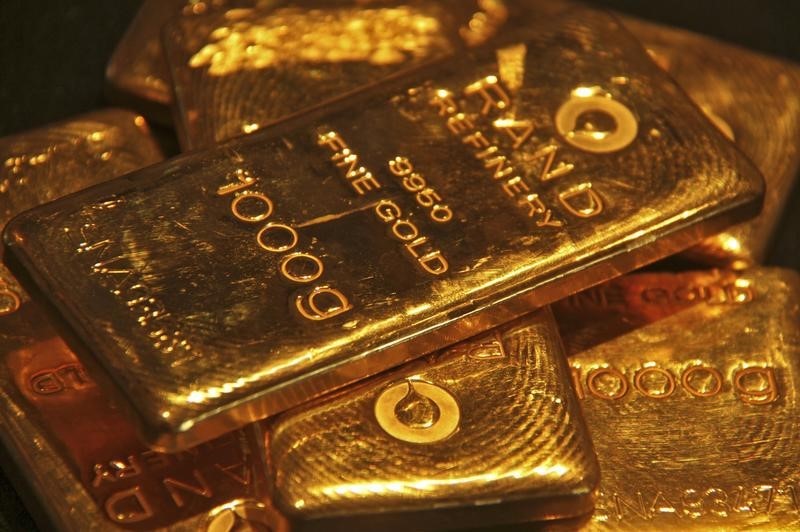Qantas shares slide to 6-mth low as airline trims revenue outlook
Investing.com-- Gold prices edged higher Monday, rebounding to a degree after consecutive weekly losses as uncertainty over future U.S. interest rate cuts and easing trade tensions reduced demand for the safe-haven metal.
At 08:00 ET (13:00 GMT), spot gold was up 0.3% at $4,014.18 an ounce, and U.S. Gold Futures rose 0.7% to $4,025.50 an ounce.
Gold prices fell more than 2% last week, marking their second straight weekly loss. Still, the metal posted nearly 4% monthly gains for October.
Gold pressured by Fed rate uncertainty
The metal’s weakness came despite the Federal Reserve’s decision to cut rates by 25 basis points last week -- a move that typically supports non-yielding assets like gold.
Fed Chair Jerome Powell’s comments that further rate cuts were “not a foregone conclusion” tempered investor optimism.
His cautious tone, echoed by other Fed officials, has prompted markets to dial back expectations for another reduction in December, pushing the dollar higher and pressuring bullion prices.
The US Dollar Index hovered near three-month highs on Monday, making gold more expensive for overseas buyers.
Easing trade tensions weigh
The outlook for gold was further dampened by easing geopolitical tensions. A closely watched meeting between U.S. President Donald Trump and Chinese President Xi Jinping in Busan last week concluded with both leaders pledging to reduce trade barriers.
The discussions reportedly included a framework for U.S. tariff reductions and Chinese commitments to increase imports of American goods.
The detente, though short of a comprehensive trade deal, helped soothe market nerves after escalating friction between the world’s two largest economies. The easing of tensions curbed safe-haven demand, further weighing on gold prices.
Spot gold prices have also come under some renewed pressure with China announcing the end of a tax rebate for some retailers, basically bringing an end to a VAT offset when selling gold that was bought from the Shanghai Gold Exchange.
"The move will cover both investment and non-investment gold, and essentially makes gold more costly for Chinese consumers," said analysts at ING, in a note..
Copper muted after weak China PMI
Other precious metals also saw gains, while industrial metals were subdued on weak Chinese factory activity data.
Silver Futures climbed 0.7% to $48.495 per ounce, while Platinum Futures jumped 1.8% to $1,604.25/oz.
Benchmark Copper Futures on the London Metal Exchange gained 0.2% to $10,910.95 a ton, and U.S. Copper Futures rose 0.4% to $5.1080 a pound.
A private survey on Monday showed that China’s manufacturing sector grew less than expected in October as the sector grappled with cooling prices and a deteriorating economic outlook.
China’s main metals association has called on policymakers to impose limits on new copper, zinc, and lead smelting capacity as the country grapples with mounting domestic competition and historically low processing fees.
The China Nonferrous Metals Industry Association submitted proposals to the central government recommending strict controls on new copper projects, as treatment and refining charges fall to record lows amid overcapacity.
"If carried out, this would mark China’s most substantial intervention in the base metals markets since capping aluminium production in 2017," said ING.
Ayushman Ojha contributed to this article
